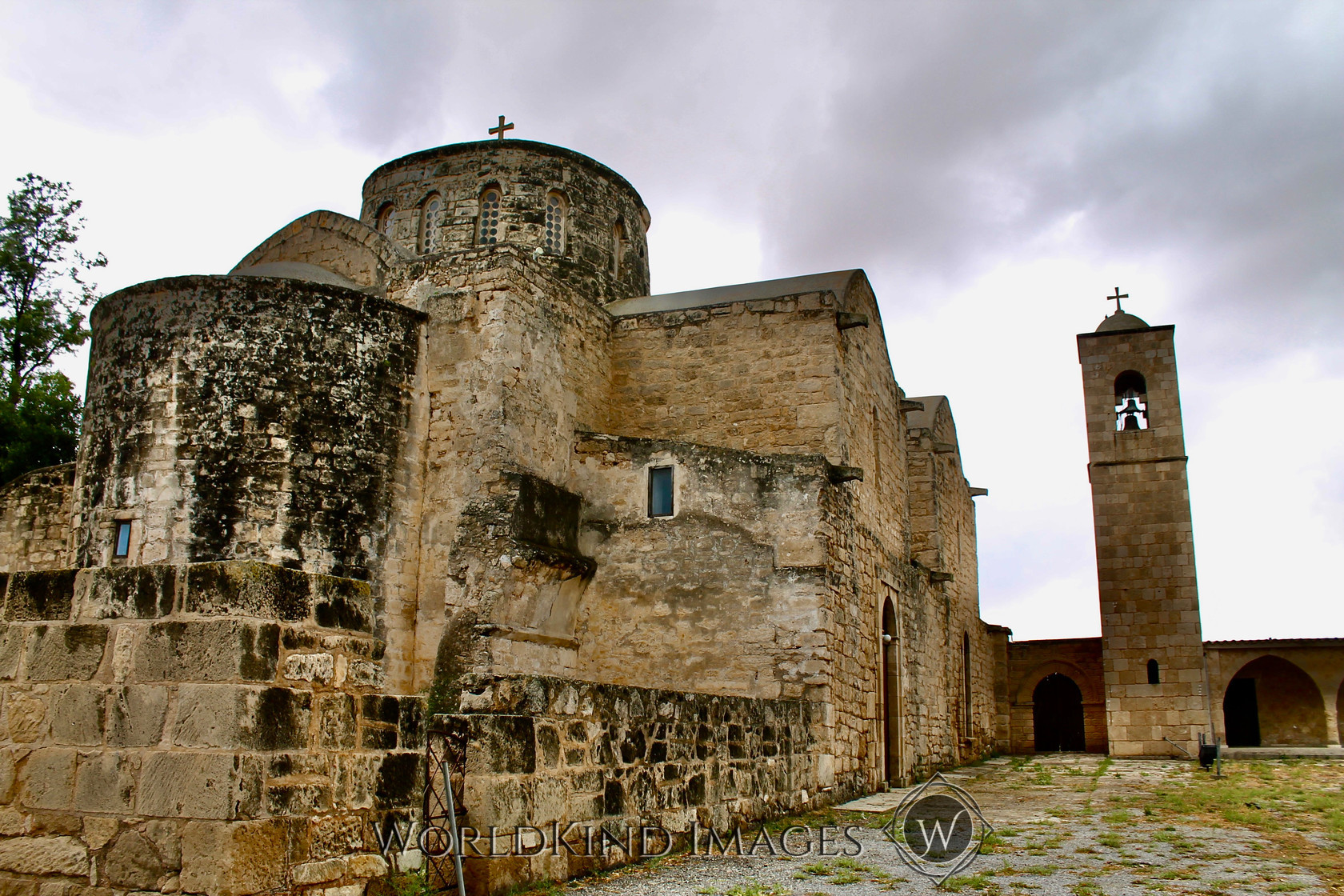St. Barnabas Archaeological & Icon Museum. Traditional Site of the Tomb of St. Barnabas. Church and Bell Tower 2
Images Arranged by Location > Cyprus > St. Barnabas Monastery Church > St. Barnabas Archaeological & Icon Museum. Traditional Site of the Tomb of St. Barnabas. Church and Bell Tower 2
© WorldKind
Caption:
Saint Barnabas, patron Saint of Cyprus, was a native of
Cyprus who returned, along with the Apostle Paul, to preach the gospel. According to tradition, he was stoned to death and his body buried in secret at this site. It was only discovered 400 years later after being revealed in a dream by Bishop Anthemios. His body was said to have been found holding an illuminated manuscript of the Gospel of Matthew. <br/> <br/>Today, the 18th century church and monastic buildings you see have been converted into an Archaeological and Icon Museum housing many Cypriot relics and icons. It has one of the best collections of Bronze and Early Iron Age antiquities in Northern Cyprus.<br/> <br/>The "Tomb of St. Barnabas" is located about 100 yards away from these buildings.Keywords: 18th Century Monastery, 18th century Church, 1st Missionary Journey, Acts, Acts 13:1-13, Acts 4:36-37, Archaeological Museum, Archaeology, Barnabas, Bronze Age antiquities, Church, Churches, Cyprus, Early Iron Age antiquities, Famagusta, First Missionary Journey, Icon, Icon Museum, Icons, Monasteries, Monastery, Museum, Patron Saint of Cyprus, Paul, Paul and Barnabas, Relics, Saint Barnabas, Salamis, St. Barnabas, Tomb


